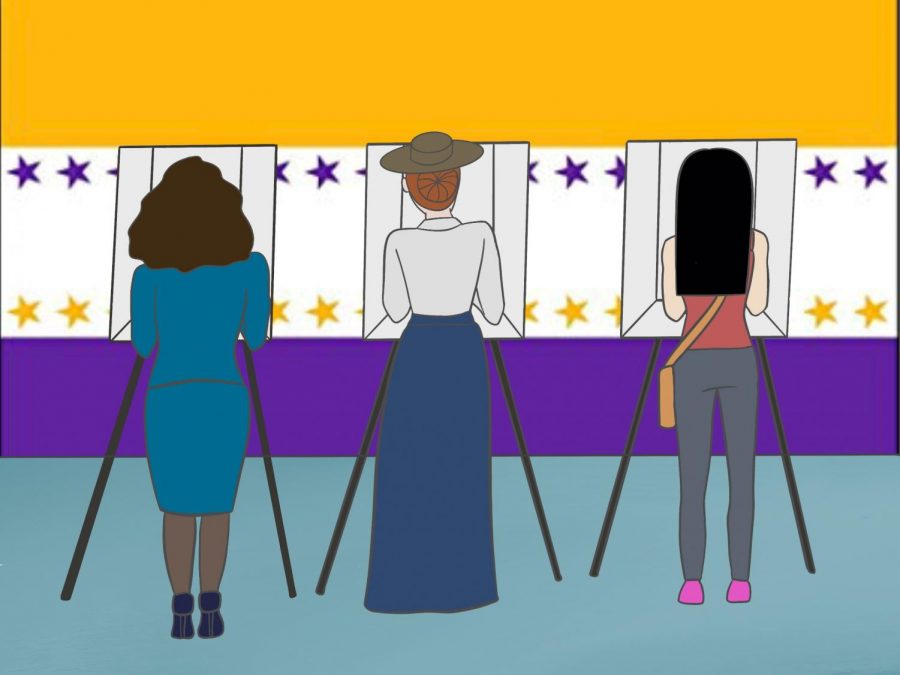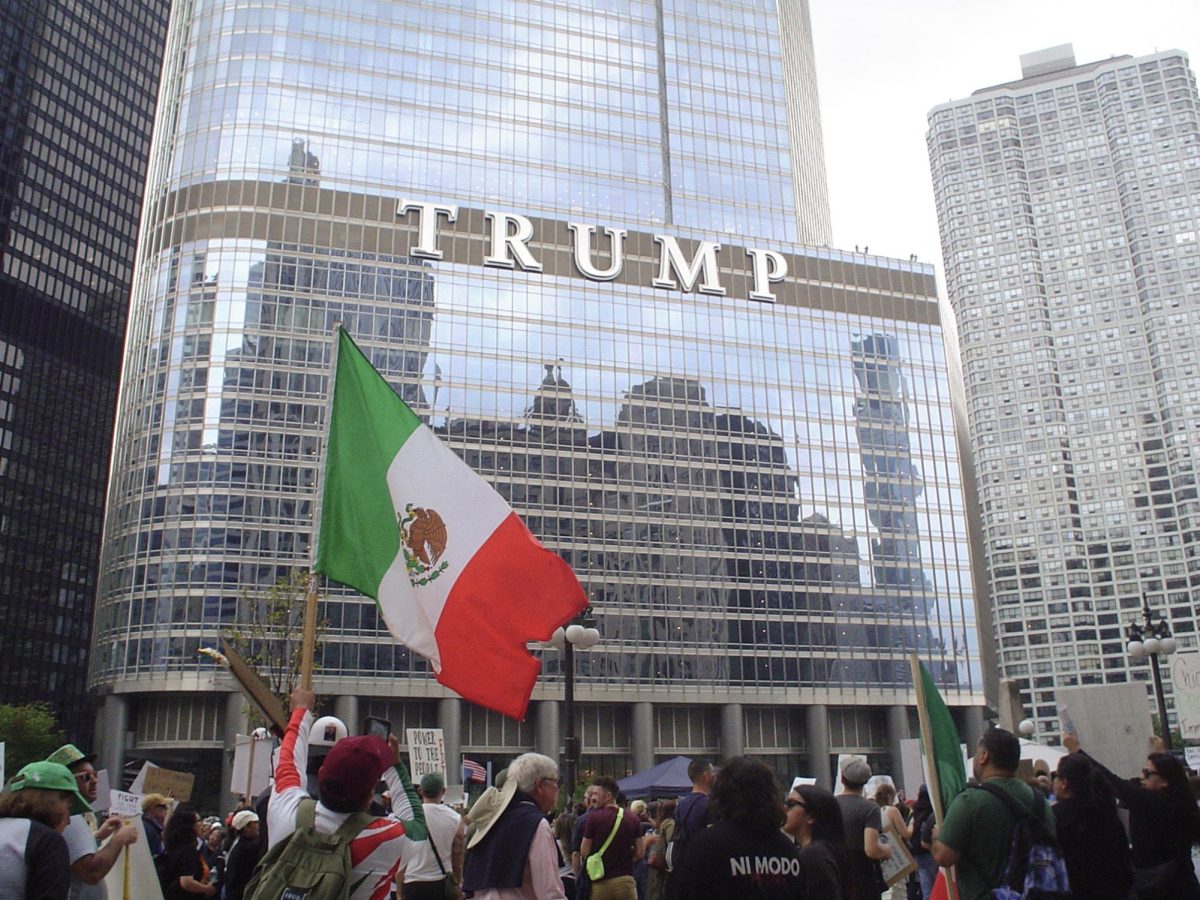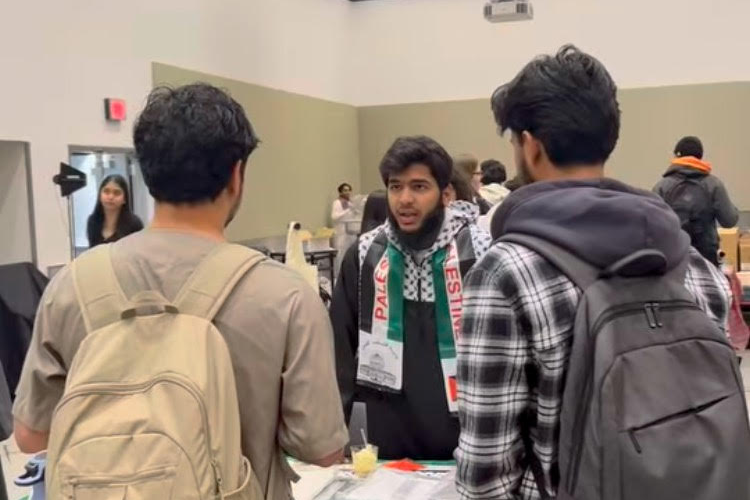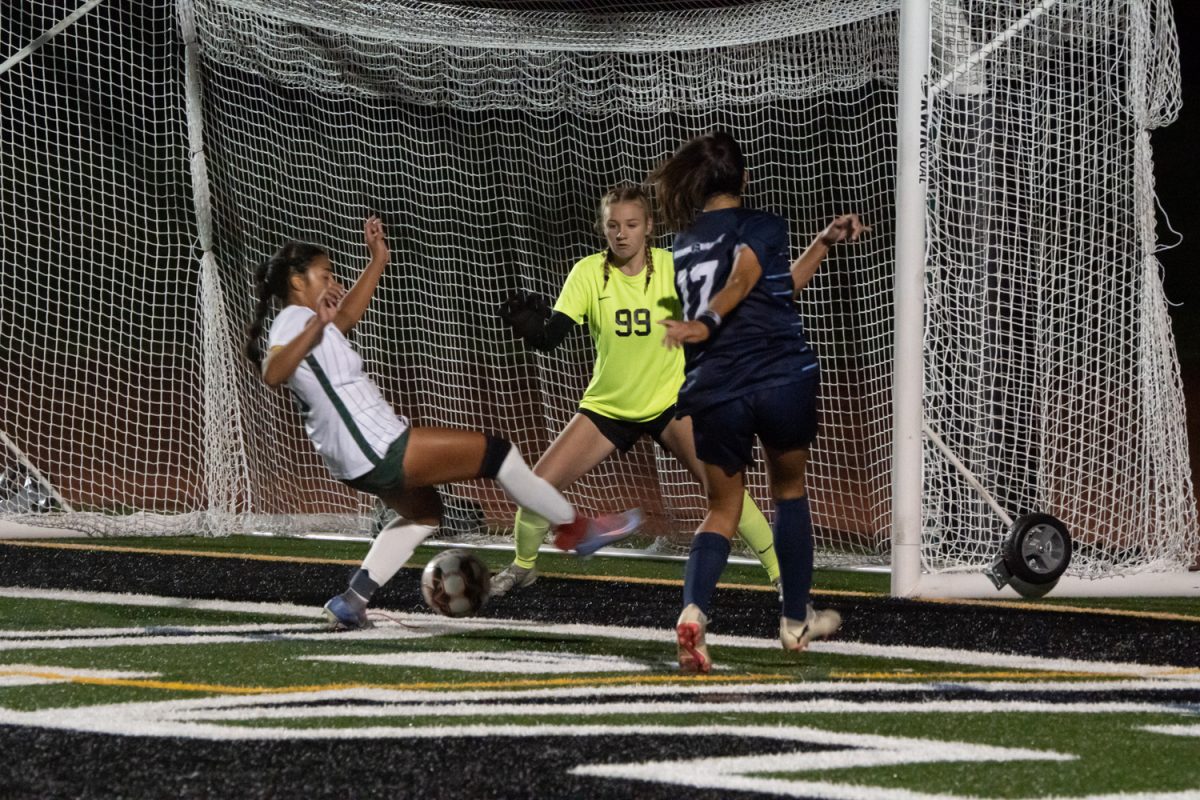Have we forgotten what the Equal Rights Amendment truly means?
(news column)
As politicians battle over the adoption of the Equal Rights Amendment, what lessons can we learn from the women who fought for their right to vote 100-years ago and wrote the ERA? (graphic by Jessica Tapia)
February 28, 2020
“When you’re on a hunger strike, time passes so slowly. You lay there all day thinking about nothing but the emptiness and nausea of hunger.” – Historian and actress Leslie Goddard portraying suffragette icon Alice Paul
History is written by those in positions of power. The incredible struggle for equality endured by luminaries of our past, like suffragette Alice Paul, is often forgotten, stripping today’s political issues of their true importance.
It seems only fitting, during the 100-year anniversary of women gaining the right to vote in America, on January 15, the crucial 38th state, Virginia, finally ratified the Equal Rights Amendment. The proposed Constitutional amendment, introduced to Congress in 1923, reads, “Equality of rights under the law shall not be denied or abridged by the United States or by a State on account of sex.”
With looming political battles and lawsuits over whether the ERA can become law decades after the amendment’s ratification deadline, why have we forgotten the courageous women who launched America’s suffragette movement? As the struggle for equality continues, what inspiration can be gained from the fight to pass the 19th Amendment and the pioneers who first demanded adoption of the ERA?

(1920) Alice Paul toasting her suffragette’ banner after the ratification of the Nineteenth Amendment, giving women the right to vote
Reawakening the tales lost to history, Goddard portrayed Paul through her tumultuous activist life in an event hosted by the Wheaton League of Women Voters at Cantigny on Feb 20, to celebrate the league’s centennial anniversary. The heroic lengths ordinary woman braved for equality was made brutally clear in Goddard’s description of Paul being force-fed while on a prison hunger strike after being arrested for picketing the White House for the right to vote.
“Five people enter your cell and drag you to a special room,” said Goddard as Paul’s character. “They force you to sit in a chair with two women holding your legs. The third holds your arms behind your back. The fourth holds a strip of fabric around your waste. The doctor attempts to force a tube down your throat. If you refuse to open your mouth, he will use a nostril instead. He pours in milk and raw egg. It’s extremely painful when the tube is withdrawn. The food sits in your stomach like a ball of lead; that’s if you’re fortunate enough to keep it down…With 30 prisoners on hunger strike, and eight of us in a state of near-total-collapse, the government suddenly capitulated. Just like that, we were all released. I was lighter by a few pounds, but no weaker in resolve.”
Finally acknowledging the suffragettes’ unwavering resolve, President Woodrow Wilson announced a bill for enfranchising women two months after their release from prison. After passing Congress, the 19th Amendment was ratified by the necessary 36 states in around a year.
After her performance, Goddard said she was flabbergasted she never heard of Paul before.
“What she did was so pioneering and scandalous for the time,” said Goddard. “It was radical for a woman to do something like picketing the White House. These women faced a lot of backlash because they were deemed so radical. But they weren’t breaking the law. It was a new form of protest, and authorities didn’t know how to respond. We can learn lessons from this today. You keep a cause in peoples’ minds by keeping them talking about it.”
Goddard said Paul would be dismayed the ERA still hasn’t been enshrined in the Constitution today. Paul co-wrote the amendment. Opposition to the ERA mirrored those against women’s suffrage, claiming the amendment would destroy traditional family values, lead to women abandoning responsibility to their children, and upend the political and judicial status-quo. Social conservatives, led by Illinoisan Phyllis Schlafly, killed the ERA’s resurgence in the 1970’s, and Illinois didn’t ratify the amendment until 2018.
“People like Schlafly branded the ERA into a politicized issue about identity,” said Goddard. “The real issue is about providing equal opportunity in the workplace, equal pay, equal representation in the courts and equal representation in Congress. You see cases involving domestic abuse or arguments over fair pay. Lack of equality comes up on issues that have serious impacts on peoples’ everyday lives. Some people don’t even realize women aren’t provided equal treatment in the Constitution.”
The Democrat-controlled House on February 13 approved a measure removing the ERA’s original ratification deadline, which was arbitrarily given by Congress. The U.S. Department of Justice’s Office of the Legal Counsel has stated the ERA is dead. However, a lawsuit against the National Archives to enshrine the amendment, led in part by Illinois Attorney General Kwame Raoul, might see ratification go as far as the Supreme Court. Five Republican-led states have counter-sued to block the measure.
Co-president of the Wheaton League of Women Voters Mary Tworek-Tupper was active in promoting the ERA during the 70’s and was elated when Illinois finally ratified it after many years of grassroots campaigning by organizations like the league. The league is a nonpartisan civic organization, which promotes voter empowerment for all people and organizes support against any type of voter suppression including gerrymandering, voter ID laws, Super PAC and secret donor campaign financial contributions, and purging voters from rolls.
“It’s incredible we still don’t have the ERA,” said Tworek-Tupper. “We are equal partners in this nation. We need one encompassing amendment that shows respect for women and recognizes the history of women being treated unequally in America. We can set an example for women across the world who are denied equal opportunity. We need to look to figures like Paul who were so incredibly passionate in fighting for what they believe. During her time, a women’s responsibility was to tend to the home and not interfere in politics. The same arguments made against the suffragettes are the arguments holding back equality for women today.”
After learning the rules of civil disobedience from British suffragettes, Paul returned to America telling supporters their fight was not women against men but a fight of all citizens united for a truly representational democracy.
In 1913, she organized an unprecedented march of 8,000 women down Pennsylvania Avenue before a crowd of hostile jeerers. As Paul, Goddard told of a bannered, horse-drawn wagon leading the suffragette procession.
“A police man told me, ‘If my wife were where you are, I’d break her head in,” said Goddard as Paul. “Don’t let them get to you ladies, keep the line moving. We marched single file, pushing our way through the crowd. Several of the women were injured when the crowd pulled them off floats and spat on them.”
Paul encouraged her fellow suffragettes their struggle through the crowds today was not a catastrophe but a blessing that will raise their cause throughout the nation. Deciding to up the ante, Paul and the suffragettes picketed the White House with banners reading, “Mr. President, how long must women wait for liberty?”
Goddard as Paul captioned one newspaper writing, “Even socialists would not protest in this undignified manner, nor would any organization run by men. There is something in the masculine mind that would shrink from a thing so compounded of pettiness and monstrosity.”
While being called “unpatriotic traitors” from the crowd, police began arresting picketers, with Paul receiving a five-month sentence.
“A woman holding a sign reading, ‘Governments derive their just power from the consent of the governed,’ was attacked by the crowd,” said Goddard as Paul. “She held to the pole of her banner so tightly she needed a doctor’s care after the men twisted her arms to get the banner from her and destroy it.”
While in prison, Paul told the superintendent they did not break any laws and therefore should be treated not as criminals, but as political prisoners.
Goddard attributes the suffragette movement’s success to the ability to capture the nation’s attention at any cost.
“Ratification instantly doubled the electorate,” said Goddard. “It’s one of the great revolutions in American political history. Paul’s story is about how a belittled group achieves political power. Men had no advantage in sharing political power but couldn’t ignore the pressure. When you keep people talking about an issue, they begin caring about it. You must generate publicity with marches and picketing. When momentum slips, you need to up the stakes. Not all suffragettes agreed on everything, but by uniting to make a visual statement, they were able to shift the public’s mindset. This is how political change happens.”
Tworek-Tupper said it’s important groups like the league help instill Paul’s passion in the next generation.
“It’s crucial to understand what our vote means and how people have struggled over history to earn that right,” said Tworek-Tupper. “We have such low voter turnout, and we need to show how politics affects our everyday lives. Students need to learn the importance of voting and civil participation early on. Everyone should be encouraging each other to vote. When people realize they are part of the whole political process, they start thinking in a broader way.
“The importance of voting also includes all the down-ballot candidates who campaign on issues that really hit home,” continued Tworek-Tupper. “You can’t complain if you give up your right to vote. For women, that glass ceiling still exists. However, in the recent midterms, the greater voter turnout helped result in a larger turnover of elected positions from men to women.”
The league runs programs educating voters on down-ballot candidates and hosts voter registration events. They also host “Living Room Conversations,” to get community members with opposing viewpoints to respectfully listen to each other on divisive topics like immigration and health care. They encourage people to better understand where each person is coming from and acknowledge how much we truly have in common.
Tworek-Tupper said the league has taken responsibility and admitted it was wrong for the suffragettes to exclude minority women in their movement.
“Equality for women doesn’t just mean white women,” she said. “Today, we always encourage more diversity within the league and push for diversity among our represented officials and local business leaders. We need to recognize our culture’s systemic racism and what activism is needed to help promote change. Equality means being open-minded and inclusive of everyone. Nobody is better than another, and we all deserve equal opportunity under the law.”
Goddard said Paul’s legacy should be as one of the great leaders of nonviolent protest. The government is recognizing her importance by including her, along with three other suffragettes, on the back of the $10 bill.
Nearly 1,000 women picketed beside Paul knowing their likely arrest. In all, 500 women were arrested, with 168 serving prison time. Proud of their struggle, suffragettes continued campaigning wearing prison door decorative pins to show solidarity.
“We cannot forget their struggle, and we cannot let the momentum stop,” said Goddard as Paul. “I would like to challenge each of you to ask yourselves, ‘What do you stand for?’ You are the young ones who need to take up the cause for the next step. The future belongs to the people who believe in the beauty of their dreams.”




















